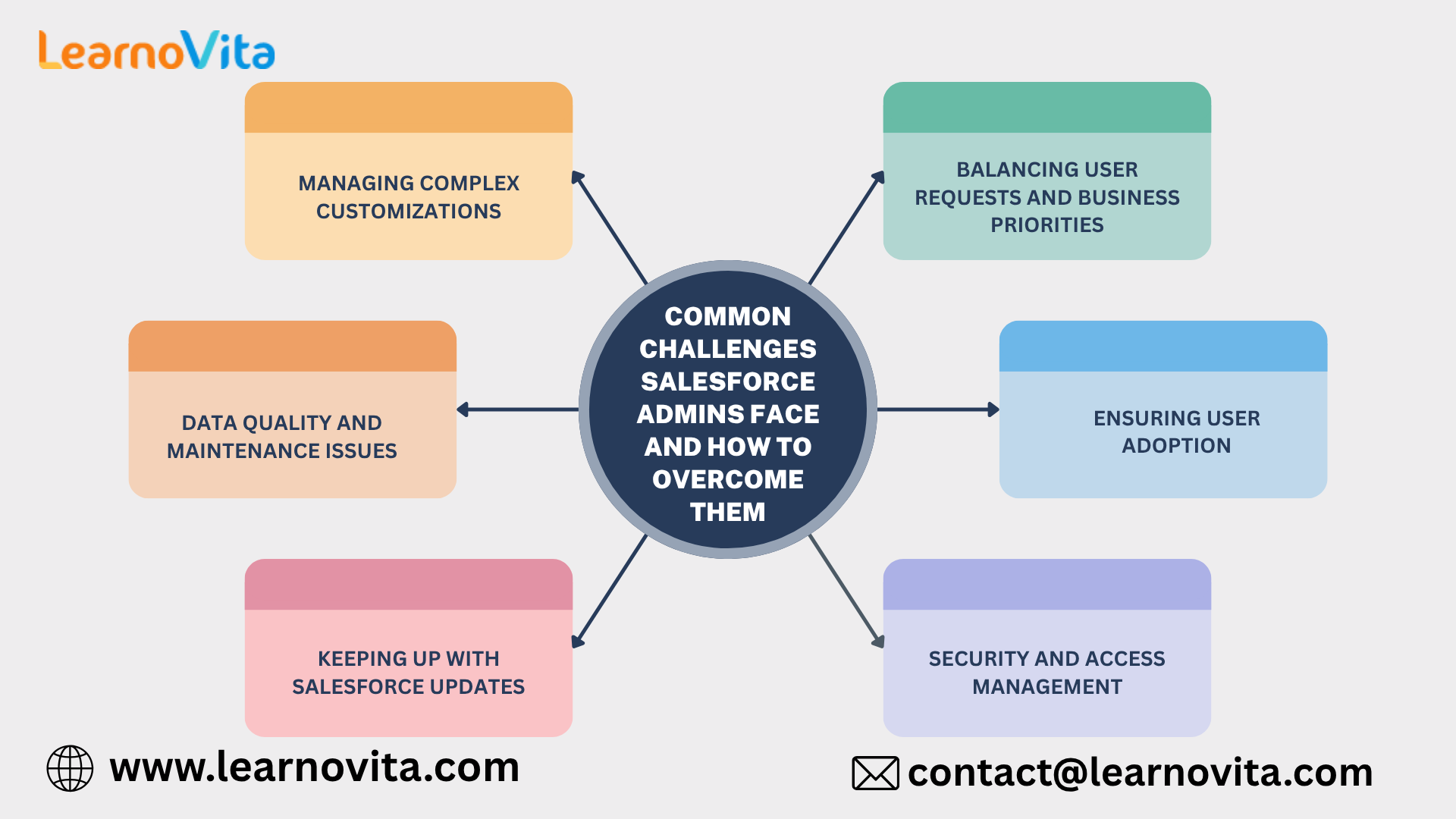How Salesforce Admins Can Tackle Their Most Pressing Challenges

Salesforce has become an essential platform for managing customer relationships, automating business processes, and driving growth. At the center of this ecosystem are Salesforce Administrators professionals who keep the system optimized, ensure user satisfaction, and align technology with business goals. However, being a Salesforce Admin is not without challenges. From managing data integrity to handling endless user requests, the role demands both technical expertise and strategic thinking. Let’s explore some of the most common challenges Salesforce Admin Course in Bangalore face and practical ways to overcome them.
1. Managing Complex Customizations
As businesses grow, Salesforce environments often become increasingly complex. With multiple departments requesting custom fields, automation rules, and integrations, the platform can quickly become cluttered and inefficient. Perform regular system audits to identify unnecessary or outdated customizations. Tools like Salesforce Optimizer and Schema Builder can help track dependencies and highlight inefficiencies. Always document every change and establish a formal approval process for new configurations. Prioritize simplicity and scalability the cleaner your setup, the easier it will be to maintain and enhance over time.
2. Maintaining Data Quality and Accuracy
Poor data quality is a persistent problem for many Salesforce Admins. Duplicates, incomplete records, and outdated information can lead to inaccurate reporting and poor decision-making. Implement strict data validation rules and duplicate management settings to maintain accuracy. Conduct periodic data cleanups and use tools like Data Loader or third-party applications to automate cleansing tasks. Educate users about proper data entry practices and emphasize why accuracy matters for business success. When users understand the value of good data, they become active contributors to maintaining it.

3. Keeping Up with Salesforce Updates
Salesforce rolls out three major updates every year, introducing new features, security enhancements, and UI improvements. While these updates are beneficial, they can also cause compatibility issues or require admins to reconfigure existing settings. Stay informed through release notes, Trailhead modules, and the Salesforce Admin Online Course Trailblazer Community. Always test updates in a sandbox environment before applying them to production. Create a checklist to review features and assess how they impact current processes. By staying proactive, Admins can take full advantage of new capabilities without disrupting existing workflows.
4. Handling Competing User Requests
Salesforce Admins often receive multiple requests from various departments, each wanting specific customizations or features. Balancing these demands while maintaining system stability can be overwhelming. Establish a structured change management process. Use a ticketing or request system to log, evaluate, and prioritize requests based on business value, urgency, and impact. Communicate regularly with stakeholders to manage expectations and ensure transparency. A clear governance model helps Admins deliver meaningful improvements without overcomplicating the platform.
5. Encouraging User Adoption
Even the best Salesforce implementation fails if users don’t fully embrace it. Low adoption often stems from lack of training, complex interfaces, or uncertainty about how Salesforce benefits individual roles. Make Salesforce more intuitive and user-focused. Customize dashboards, layouts, and workflows to suit specific job functions. Provide continuous training through workshops, videos, or quick reference guides. Recognize and reward active users to motivate others. When employees understand how Salesforce simplifies their work, adoption naturally improves.
6. Balancing Security and Accessibility
Salesforce Admins must ensure that users have the right access to do their jobs — without exposing sensitive business or customer data. Striking this balance between security and usability is a constant challenge. Apply the principle of least privilege by granting users only the access necessary for their role. Review user profiles and permission sets regularly, and use monitoring tools like Salesforce Shield for enhanced data protection. Maintain clear documentation of access controls to ensure compliance and transparency. Strong security practices protect data integrity while supporting productivity.
Conclusion
The role of a Salesforce Administrator is both demanding and rewarding. Admins are not just system managers they are key players in driving digital transformation and business success. While the challenges may seem daunting, each one offers an opportunity to improve processes, strengthen user engagement, and enhance overall system performance. By staying organized, proactive, and continuously learning, Salesforce Admins can overcome obstacles and deliver lasting value to their organizations. In a rapidly evolving ecosystem, adaptability and strategic thinking are what set great Admins apart turning everyday challenges into opportunities for growth and innovation.
- Questions and Answers
- Opinion
- Motivational and Inspiring Story
- Technology
- Live and Let live
- Focus
- Geopolitics
- Military-Arms/Equipment
- Security
- Economy
- Beasts of Nations
- Machine Tools-The “Mother Industry”
- Art
- Causes
- Crafts
- Dance
- Drinks
- Film/Movie
- Fitness
- Food
- Games
- Gardening
- Health
- Home
- Literature
- Music
- Networking
- Other
- Party
- Religion
- Shopping
- Sports
- Theater
- Health and Wellness
- News
- Culture

